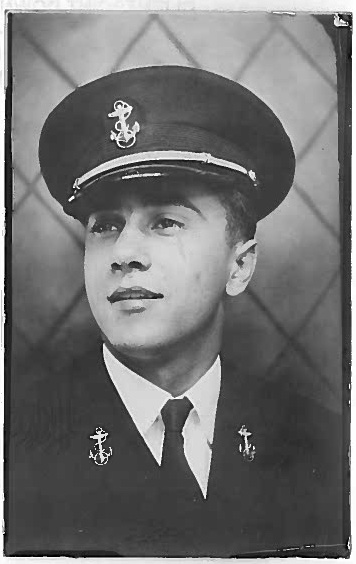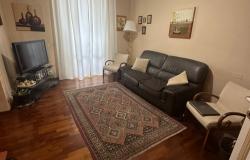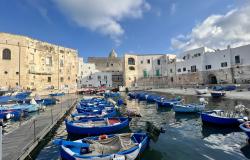“Mio Dio!” (Oh my God!) - these are the words Janet Badia most associates with her first trip to Italy to discover her family’s roots; as she recalls, “they capture both the surprise and delight of an incredible adventure.”
Janet traveled to Italy with her sister Lisa for the first time in 2012. Growing up immersed in the local Italian American community in Bellaire, Ohio, and next door to their grandparents, on that first trip to Italy, the two sisters were determined to connect with any living relatives in the small village of Barisciano, Abruzzo, the hometown of her father’s father and grandparents, even though neither they nor their father had ever met relatives in Italy.
Their determination rewarded them. They were able to meet a handful of their father’s relatives, overcoming the language barrier. They even met their oldest living relative, a cousin who was 95 at the time.
Read more about Janet’s story below as she recalls the experience for us.
What prompted you to begin your search to trace your Italian roots?
My paternal grandfather, Achille Badia, emigrated to the U.S. in 1909, and my paternal grandmother’s parents came over in 1907, all locating in Bellaire, OH, about an hour outside Pittsburgh, PA. We grew up next door to my paternal grandparents, and we spent a lot of time at their house. Their generation spoke Italian whenever relatives visited and celebrated every occasion with big Italian feasts, complete with homemade pasta, sausage, and wine. I recall my grandmother, Theresa, taking an occasional trip to Italy with her sisters during my childhood (my grandfather died before I was born, but I think my grandmother also preferred to travel with her sisters, a trait she seems to have passed onto at least two of her granddaughters). She also stayed closely connected to the larger network of relatives and friends who had emigrated to the U.S. from the same village in Abruzzo, including extended family in Detroit and Pittsburgh.
One of my earliest memories is attending the Pittsburgh area “Barisciano Picnic,” an annual reunion of families that had come to the U.S. or Canada from Barisciano. Thanks to our grandparents, my family has always been deeply connected to our Italian roots. When I started to approach 40 and felt travel abroad was finally a luxury I could afford, my sister and I started planning a trip to Italy, and there was no way we were going to go to Italy and not visit this place that had been tripping off our family’s tongue our entire lives. Barisciano was at the top of the list of places we had to work into our 14-day trip.
Please describe the process. Did you already know your ancestral town (by ancestral town I mean the town where your relative(s) who emigrated was from)? If not, how did you find it? Who or what was your first resource when you started your search for your ancestral town and Italian relatives (a relative, an office, an online service, etc.)?
I can’t remember a time when I didn’t know my family was from Barisciano. It was just a central part of our family identity growing up. And we benefited enormously from research others in our extended family had done. At the annual Barisciano Picnic, a giant family tree on display contained hundreds and hundreds of names of the family members of those who had come from the Barisciano wave of emigrants, both their ascendants and descendants. My dad’s cousin’s wife was also a genealogist by hobby and had researched a lot of our family tree on my dad’s side, mostly on the maternal side (DiPaolo), but also on the paternal side (Badia), and passed along that information to us in the 1990s. It’s the version of our family tree we took with us when we first traveled to Barisciano in 2012.
What were the obstacles, if any, during the process of finding your relatives and then getting in touch?
Our family tree, while it tracked a lot of my grandmother’s and grandfather’s cousins in Italy, was not up-to-date. It ended with my dad’s generation as children (that is, the generation born between the 1920s-1950s). So that was the first obstacle. The second obstacle was that by 2012 my siblings and I represented the oldest generation in my family: my grandparents, their siblings, and my parents were all gone, most of them before I even graduated from college as a 22-year-old in 1994. We had lost invaluable sources of familial memory and knowledge and had no way of making up for it. But were it not for social media that allowed us to locate some of our Barisciano relatives, I don’t know that we could have made the couple essential connections we made. Additionally, we were never taught or expected to learn Italian as children, so the entire prospect of visiting Barisciano, a tiny village way off the beaten path, was intimidating: not only is it quasi-remote and therefore not easily accessible, but we weren’t sure we would be able to communicate with anyone once we got there. Regardless, even if we weren’t able to connect to relatives, we wanted to see it and experience the village for ourselves.
Please describe the moment when you first met your Italian relatives. How did you feel?
Because of gaps in communication prior to our arrival, our visit was a bit sprung on those we had hoped to visit, so mostly the initial meet-up was a whirlwind of confusion. We were initially met by the teenage granddaughter of my grandmother’s cousin, Alice Del Cotto, who had been our point of contact prior to arriving and who, at this moment, having studied English recently in high school, served as our principal translator during the visit. It took a good 15 minutes just to get our bearings and to be able to communicate through fragments of English and Italian. She was eventually joined by her father, Domenico. I am sure I must have felt some emotion, but honestly, as so much of the attempted conversation depended not only on Alice’s limited English, but on my little knowledge of Italian, which I would in turn try to translate for my sister, I could never really get outside my head in order to just experience the moment.
Later in the day, we were joined by a relative from the Badia side of our family who drove from L’Aquila to meet us. She happens to be an English teacher, and you can imagine our relief upon her arrival in Barisciano. With Piera’s arrival, we were able to not only better communicate with everyone we had met, but also learn about our extended family on my grandfather’s side over dinner at the village pizzeria. That dinner sprouted what will no doubt be a lifelong friendship with Piera and her family, whom we saw again when we returned to Italy in 2015, this time with two teenage nieces and a nephew.
Please describe how you felt the first time you walked the streets of your ancestral town.
As I noted above, our goal was to connect with relatives while there, but we were also simply drawn to the place. We wanted to see the mountains where my dad once owned land and experience Barisciano for ourselves. A significant part of our time there, which in hindsight turned out to be too-short a visit, was spent walking the village streets and cemetery. Our visit to the cemetery was especially stirring. The names and faces across many of the grave markers were are so familiar. Except for some variations in spelling, the names were all known to us. Walking through the gravesites felt like reading a directory for the eastern Ohio town, indeed the very neighborhood where we grew up. The faces, too, felt familiar. The texture and color of the hair, the shape of the eyebrows, the aquiline noses. So many of the men in the gravestone images reminded me of my dad, much the same way one of my dad’s Detroit cousins always seemed his younger doppelganger to me.
It was also fascinating to see how my own dad’s ingenuity when it came to repurposing items otherwise destined for the trash heap was evident throughout the village. I lost count of the ways we saw emptied old plastic bottles given ingenious, utilitarian make-overs across many of the yards and gardens we passed. My sister was struck by how one stone-retaining wall had been fashioned identically to the one my dad and grandfather built behind our own house.
Any fun anecdotes about meeting your Italian relatives?
Following an afternoon tour of the village with our relatives, we returned to our bed and breakfast (the only one in tiny Barisciano) where we struck up a conversation with the husband of the couple who owned the B&B. He was curious how we knew the Del Cotto family, who had accompanied us back to the B&B. As we had already done several times throughout the afternoon, we resorted to explaining who we were through our printed family tree and with the help of Alice. In the charming courtyard of the B&B, we laid out our family tree on a patio table and everyone, including the owners of the B&B, Adriano and Cinzia, gathered around it. After several minutes spent exchanging fragments of English and Italian, punctuated with animated hand gestures to aid in interpretation, Adriano grabbed his chest and yelled out, “Mio Dio!” while mock-fainting into a chair. There, on our family tree, was his mother-in-law’s name, Julia. Phone calls followed, including, most importantly, one to Julia, and over the course of the next hour, our new Barisciano family swelled. We then spent the rest of that afternoon under the beautiful Abruzzo sun, handwriting in new generations to our now creased, tattered, but ever-more-precious family tree. We were also able to learn more information about those already on the tree, including information about those who had passed away or moved from Barisciano.
Did you discover any amazing story during the process of searching for your Italian relatives?
Despite significant language barriers and a less-than well-planned visit, we were able to meet our oldest living relative: my grandmother’s first cousin Lidia, who, if I translated correctly at the time, was 95 when we met her and still living in provisional housing after being displaced by the 2009 earthquake that had devastated nearby L’Aquila and caused considerable damage to Barisciano. In a stroke of brilliance, my sister had thought to pack old photos of our grandparents and aunts and uncles to help us navigate the village and explain to folks who we were. Even with the photos and the aid of Alice, it was a struggle to convey to Lidia who we were, but piano piano, we persevered. We knew she understood us when she left the room where we had all gathered and returned soon after with a photo of our dad in his Navy uniform taken during his service in World War II and obviously sent to her from our grandmother. We were overcome with emotion realizing what the photo must have meant both to a proud mother in the U.S. and to our relatives who had survived Fascism in Italy.

Ultimately, what has the experience of reconnecting to your Italian roots meant to you?
It transformed our lives. After returning from our trip, my sister Lisa, who still lives back home in Ohio, would share stories about our travels with folks from the Italian-American community there, and one of the unforeseen outcomes of these conversations was a realization that we might qualify for Italian citizenship jure sanguinis.
One particular conversation triggered my sister’s memory of having seen my grandfather’s naturalization certificate when we were sorting through my grandmother’s belongings after her death in 1992. Lisa remembered that the document listed my dad on it as a living child, and that’s when we started to put the pieces together: my Dad was born on U.S. soil before his father became a naturalized citizen in the United States. Unfortunately, we didn’t have the actual naturalization certificate to confirm it. And that’s when we began the process of researching Italian citizenship. I still recall the feeling I experienced of both elation and pride when the copy of my grandfather’s naturalization certificate arrived in the mail from U.S. Citizenship and Immigration Services, confirming my sister’s memory of the document and therefore confirming my dad’s Italian citizenship.
It took us another year of additional research and paperwork, but, in 2013, we were acknowledged as Italian citizens, along with several of my siblings and nieces and nephews. My Italian citizenship is something I cherish and feel daily inspired by. Not one day has gone by since gaining my citizenship that I haven’t contemplated the privilege and its meaning. Often times, that translates into language study (it’s been my goal for several years now to learn as much Italian as I can and I practice daily); at other times, it translates into mindful reflection about the family, culture, and places my ancestors were forced to leave behind in the hopes of finding better opportunities here.




